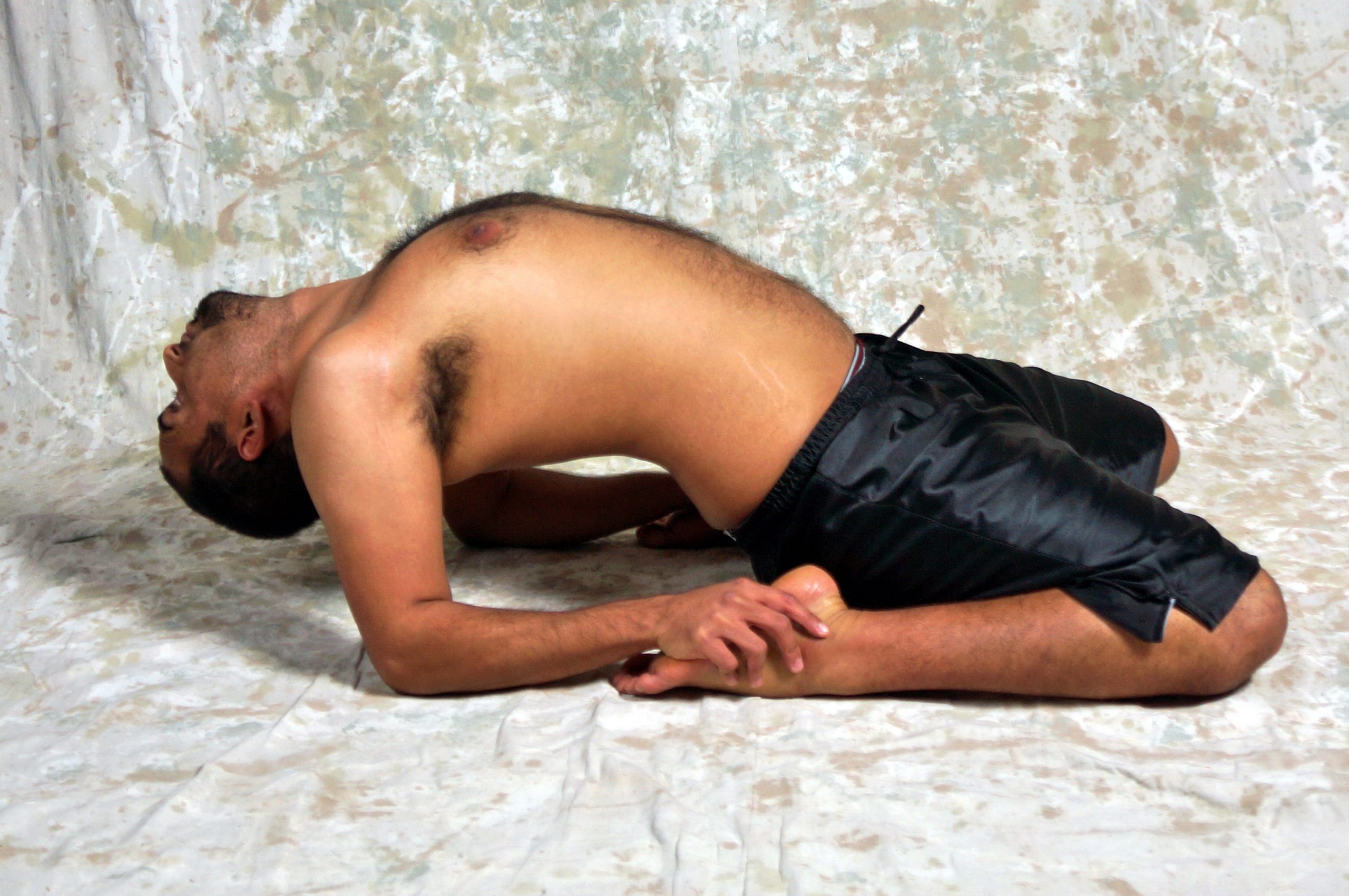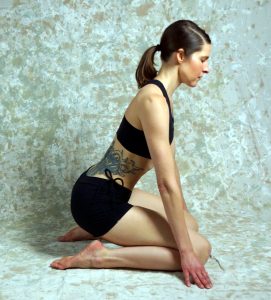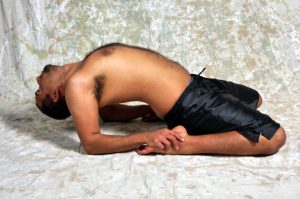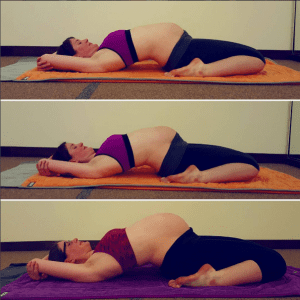
by Ann Chrapkiewicz
An important yoga-related question occurs commonly with regards to Fixed Firm Posture:

I hear something like: “When am I going to be able to do the posture?”
I smile in response: “What are you talking about? You are already doing it. I have seen you do it several times a week for the past 5 months.”
“But I am terrible at it. When am I going to be good at it?”
The question I must ask in return:
What do you mean by “doing” a posture? Or being good at it? And what is the purpose of the posture?
Let us say that you are thirsty for a drink of water. Very thirsty. As in you just ran a mile unexpectedly on a hot, sunny day. You have been breathing hard and were not hydrated beforehand. You arrive at a fountain of fresh, clean water, and a friend of yours is even standing there, holding out a large glass of this water that he has just filled for you.
This angel of a friend says to you, “You look so thirsty. I got this water ready for you and even squeezed a little bit of lemon in it.”
What do you do? Take the water, right? Drink it blissfully and in complete appreciation for the water, the fountain, and the friend. And maybe even ask for a second glass. You feel every drop of it soothing your dry mouth and thirsty body. Heaven. You drink the water to relieve your thirst. Plain and simple.
You do not think about whether you are drinking it as well as someone else drinks a glass of water.
But am I good enough?
Well, you know you are good enough to drink the water when you are thirsty, right? How “good” you are probably doesn’t even cross your mind. You just fulfill the need.
We can apply the same simplicity to therapeutic yoga postures, especially the difficult ones.
Let us say that you have tight ankles, old foot injuries, bad knees, tight quadriceps, or poor leg circulation.
A lifetime – or even just a few years – of misuse, while not intentional on your part, has resulted in poor mobility, slowed healing, stiffness, or pain. Not to mention disillusionment with your own body, and lack of faith in its ability to feel better with the passage of time. It just seems to get worse each year, little by little.
So you arrive in a Bikram Yoga class, perhaps at the urging of a friend. And maybe you even come back 100 times, just to get the smallest taste of the immense benefits that are available. Each day, you do the deep breathing, the standing warm-up postures, and the spine strengthening series. Not too bad, you think. I feel so good when I am done with class, my panic attacks have virtually disappeared, my depression is nearly gone, my cholesterol has dropped, and my blood sugar is balancing….this is definitely good for me.
But then you get up from the floor to do Fixed Firm Posture.

All of a sudden, the thoughts come pouring out like a waterfall: “I cannot do this posture! When am I going to be able to DO this posture? Why can other people do it better than I can? Why do I suck at this? I am not good at yoga.”
These thoughts repeat themselves for the entire 20 seconds of the first set. Finally, the teacher says it is time to change, and you turn around and flop down on the floor, partially defeated and partially relieved that it is over. “Oh, god,” you think. “I have to do it again.” Hell.
Heaven or Hell? You choose.
Now what you might not realize – or perhaps might know but often forget – is that Fixed Firm Posture is, for most sets of legs, that metaphorical fresh drink of water at the end of the hot sweaty mile you ran.
Your friend (Ms. Yoga) knows that your legs are weary, stiff, and damaged, and she has prepared you – through the first 80 minutes of the class – for the maximum benefit of Fixed Firm Posture. She has designated about a minute of your day to help you find relief, improve circulation, and generally help your legs to function better. She offers this to you joyfully and with calm persistence and faith that the posture will help in some way.
But instead of accepting the glass of water from Ms. Yoga and drinking it joyfully, your mind says, “Oh jeez. I am not good at drinking water…I cannot do it as gracefully as the other people around me. Is this over yet? I really can’t stand this but I will go through the motions. Ugh. I guess.” Little to no appreciation happening, no relaxation, and very little awareness of the breathing for those 20 seconds. Just mental torture!
And it doesn’t just happen in Fixed Firm Posture. It can happen in any posture, and it can transfer from one posture to another, as time passes in our practice and old injuries or weaknesses come to the surface.
Instead of seeing a posture for what it is – a tool for healing – the mind can turn it into a thing to be achieved. The mind can basically ruin the whole thing – not just one posture but the whole class. Just by choosing a certain set of thoughts. We generate dread and tension when relief and healing is being offered.

Drink the water. Savor every drop.
Although our beloved yoga method is intensely physical, 99% of the most wonderful lessons and benefits are mental. And this example is one of the many great shifts that can happen. The reality is that fixed firm posture is here to help you heal your legs. It regulates the circulation of blood and lymph. It removes scar tissue. And it is known as one of the best postures for the second and third trimesters of pregnancy.
If you dread it or if you see it as something you need to accomplish, you can create all the suffering and mental hell you want. You might even leave the yoga class with a negative comment for social media about how this was supposed to be a beginners’ class, but clearly it was not because you couldn’t do some of the postures.
But if you consciously approach it as your friend and appreciate it for what it is, you can learn to relax while you do it….and maybe even enjoy it. Here’s to Fixed Firm Posture.
By “doing” a posture, all we mean is an honest, correct, open-minded attempt, repeated consistently. Without thought of the outcome, without comparison.
The purpose of doing a posture in a therapeutic lineage is healing, not the achievement of some particular depth of expression.

